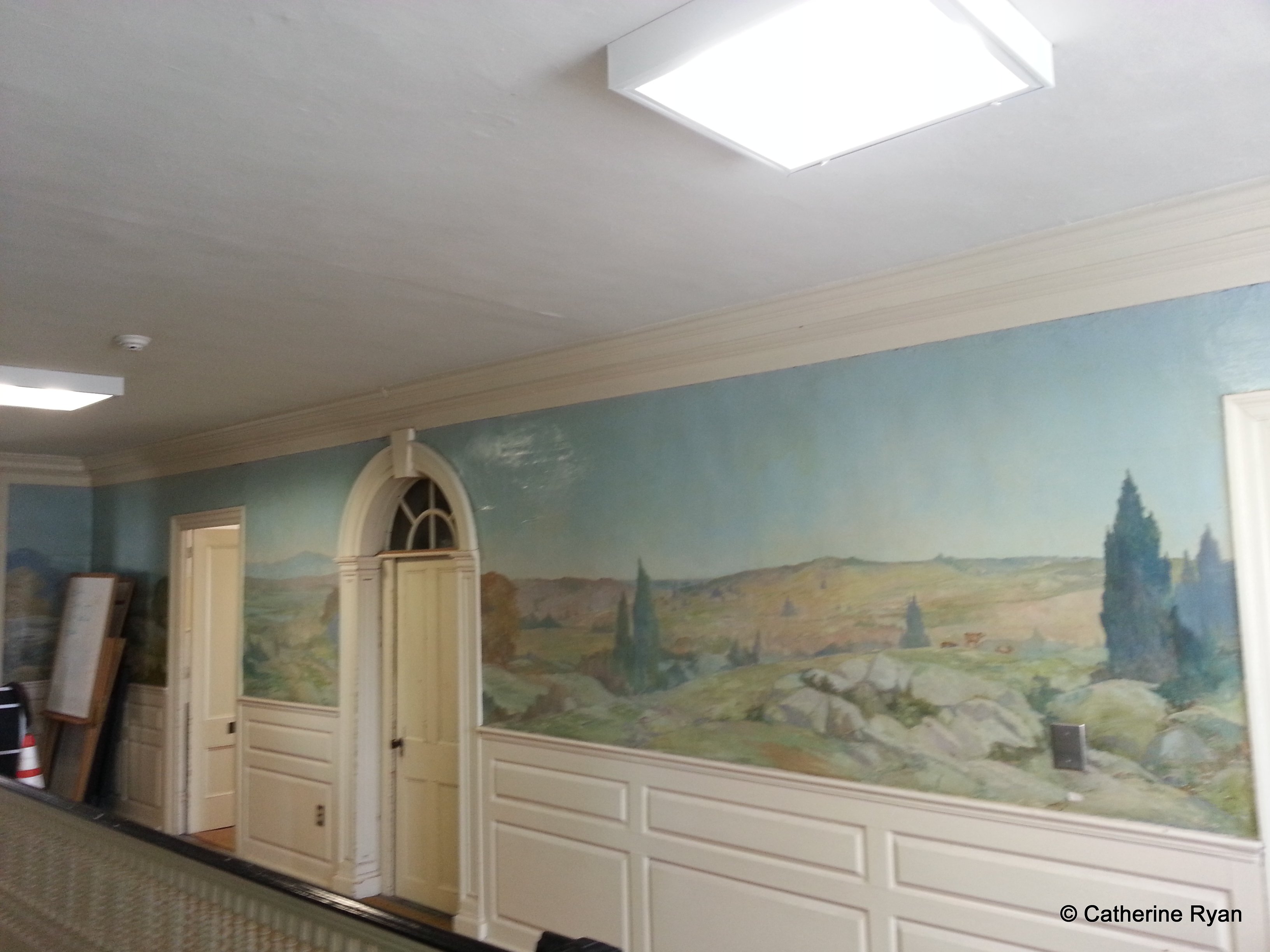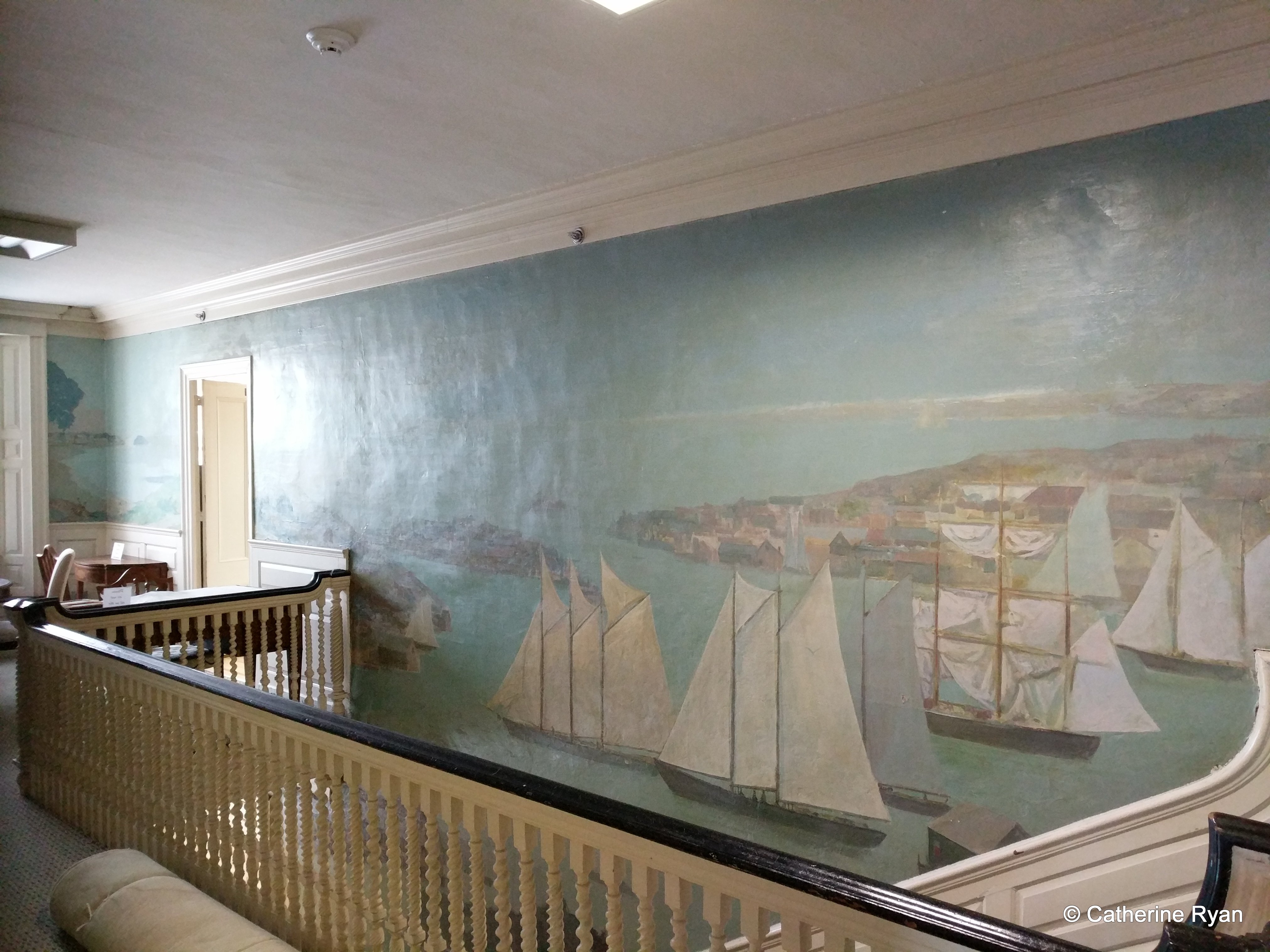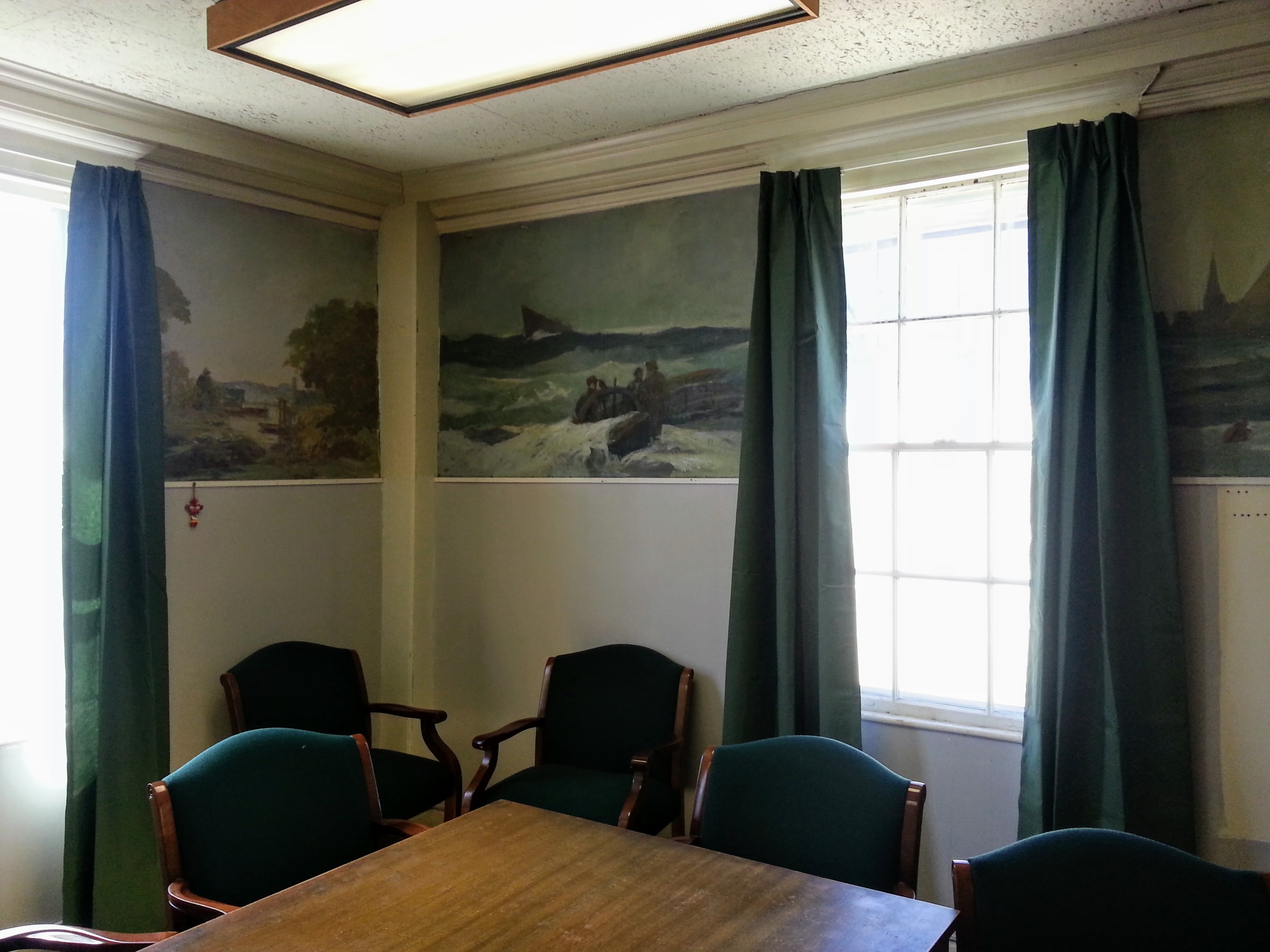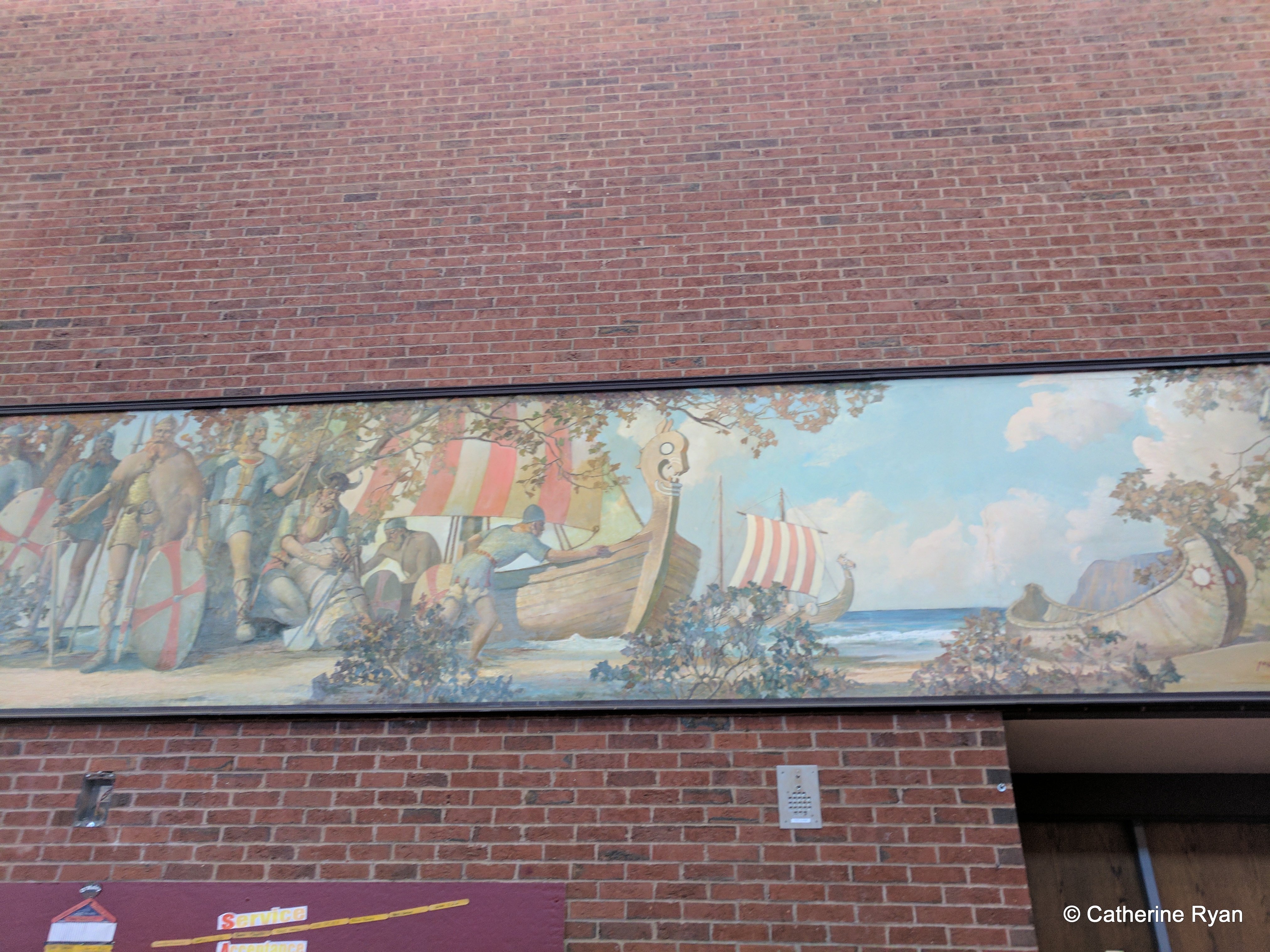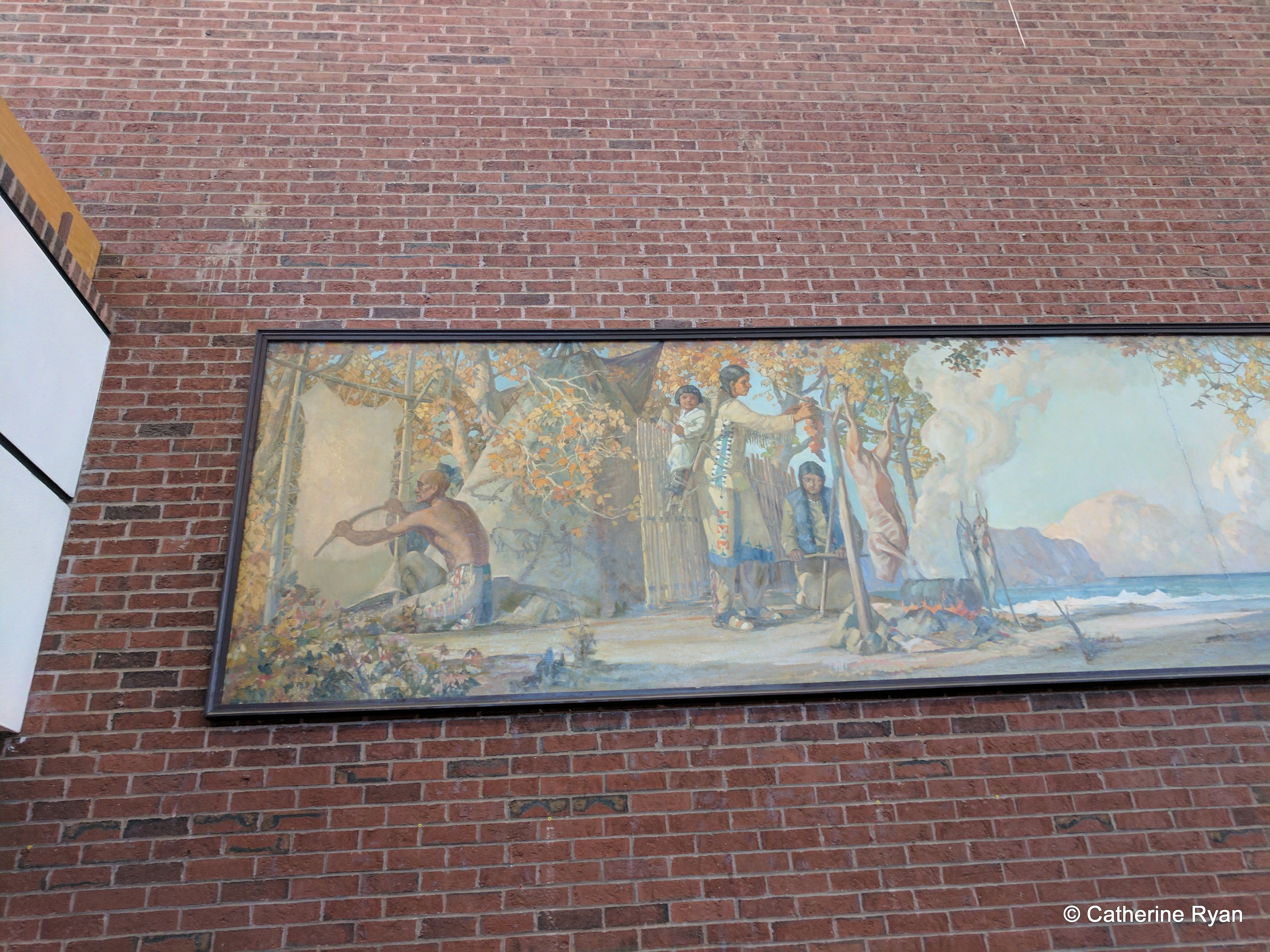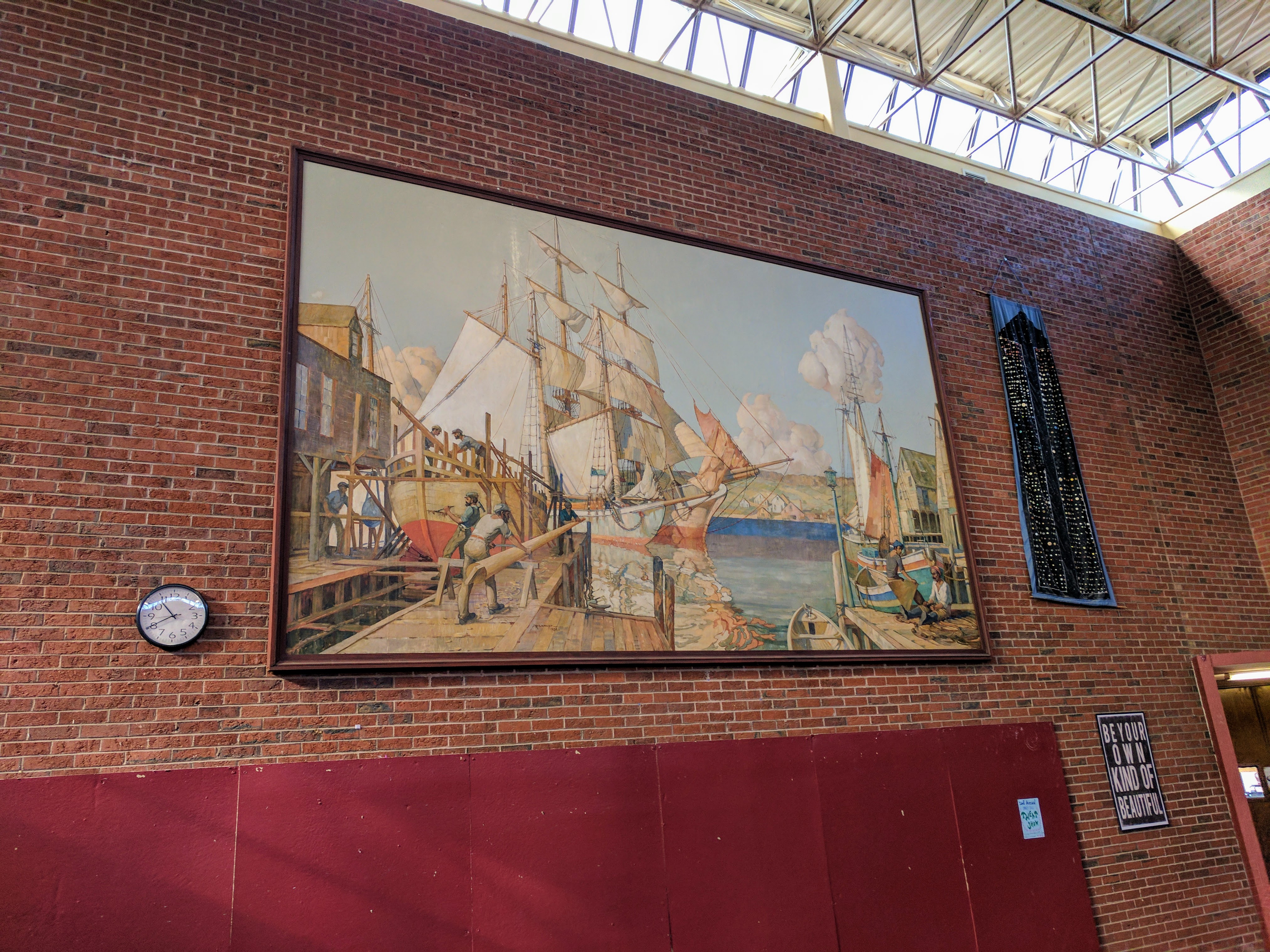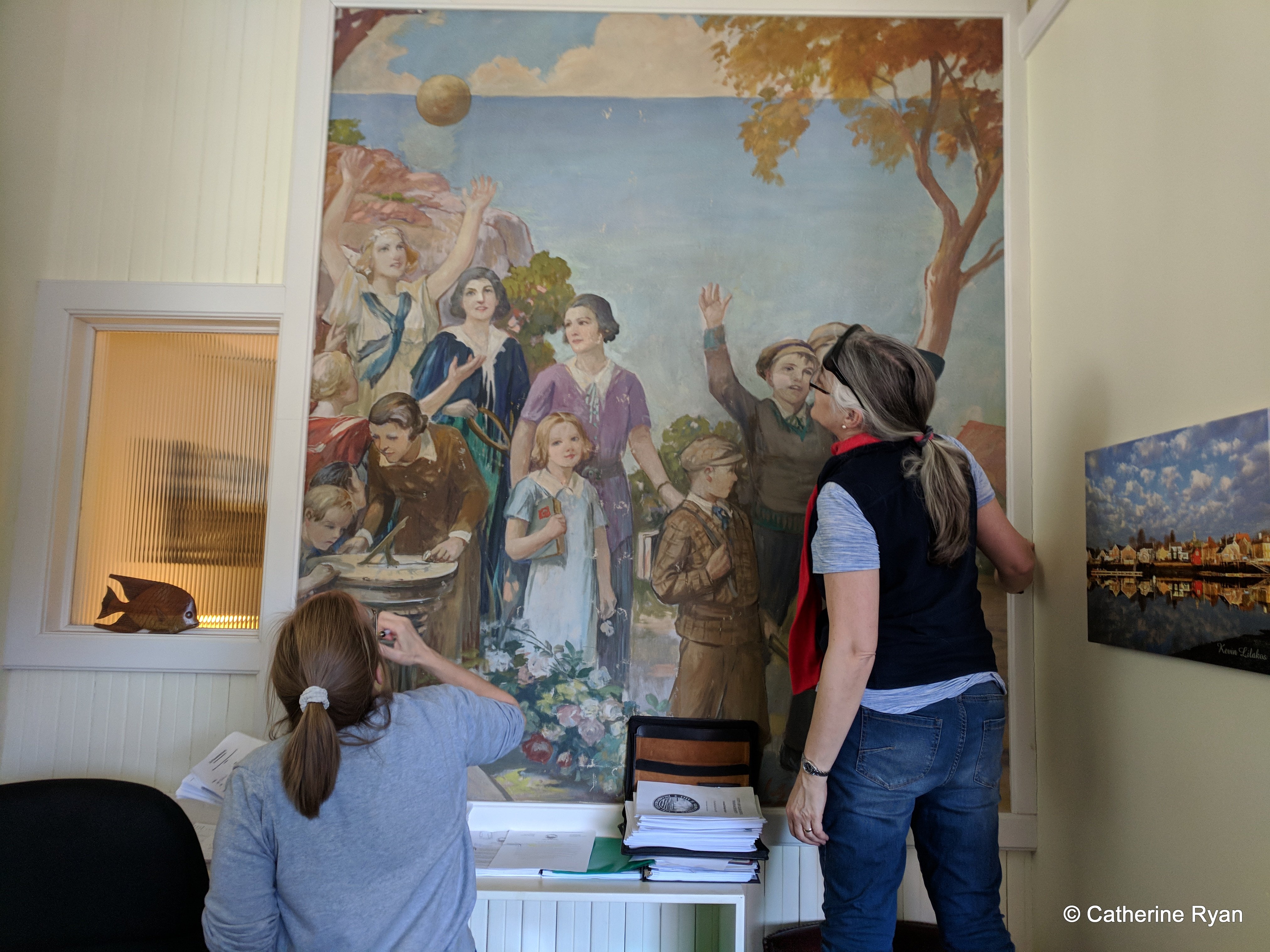
Judith Dobrzynski highlights WPA murals and a renewed online resource* for “Arts in Review” the Wall Street Journal.
“During the Great Depression, federal programs funded the creation of thousands of murals in post offices, hospitals and other locations across the country, many of which can now be viewed online.”
Judith H. Dobrzynski. The Staying Inside Guide: Big-Deal Art in Plain-Spoken Venues. Wall Street Journal. March 23, 2021. *A few of the WPA murals completed in Gloucester had been included in an earlier iteration of the website, in some cases misattributed. Gloucester is not mentioned in the article.
The reviewer highlights Coit Tower in San Francisco as one renowned example.
“The New Deal murals inside Coit Tower in San Francisco are also well-known. Painted by some two-dozen artists in 1934, they are social realist panels about life in California during the Depression, with titles like “Banking and Law” and “Meat Industry.” Their story, with a detailed layout, is available in a San Francisco Recreation and Park Department brochure.”
Judith H. Dobrzynski for WSJ
The reverse ratio is evident here: Gloucester selected four artists who completed scores of masterworks* for specific public buildings. Monumental stunning mural cycles were commissioned under the auspices of Federal Arts PWAP and WPA-era programs from 1935-42 for Sawyer Free Library, City Hall, the High School on Dale Ave (now Central Grammar apartments), Hovey, Maplewood, and Forbes elementary schools. As schools were closed, disposed, or repurposed, murals were rescued and resited within City Hall and later O’Maley.
The City of Gloucester artists were significant muralists and painters. In truth, venerated. They captured stories of Gloucester and became a celebrated part of our history and artistry. When considered as a whole, the Gloucester murals rival WPA era collections completed in big cities. The density of murals are as concentrated as any found in larger cities, like Coit Tower in San Francisco, though spread out among buildings rather than one tower, or one structure, as with Harlem Hospital.
Gloucester’s post office nearly landed a commission, but fate intervened. I’ll save that for the Part 2 post.
Gloucester and greater Cape Ann artists were commissioned for murals beyond Gloucester and Massachusetts and served key roles on selection panels and planning.
“Gloucester is not mentioned in this WSJ article or few major compilations. “Though painted by nationally known and successful artists at the top of their game, the works have suffered from a perfect storm of anonymity.”
Catherine Ryan, 2012
In recent years thanks to a CPA award, the Williamstown Art Conservation Center, established in 1978 to help museums with conservation, evaluated the condition of the city’s historic Depression era collection to help with important restoration. Gloucester’s impressive collection itself is the museum and the city a work of art that continues to inspire generations of artists.



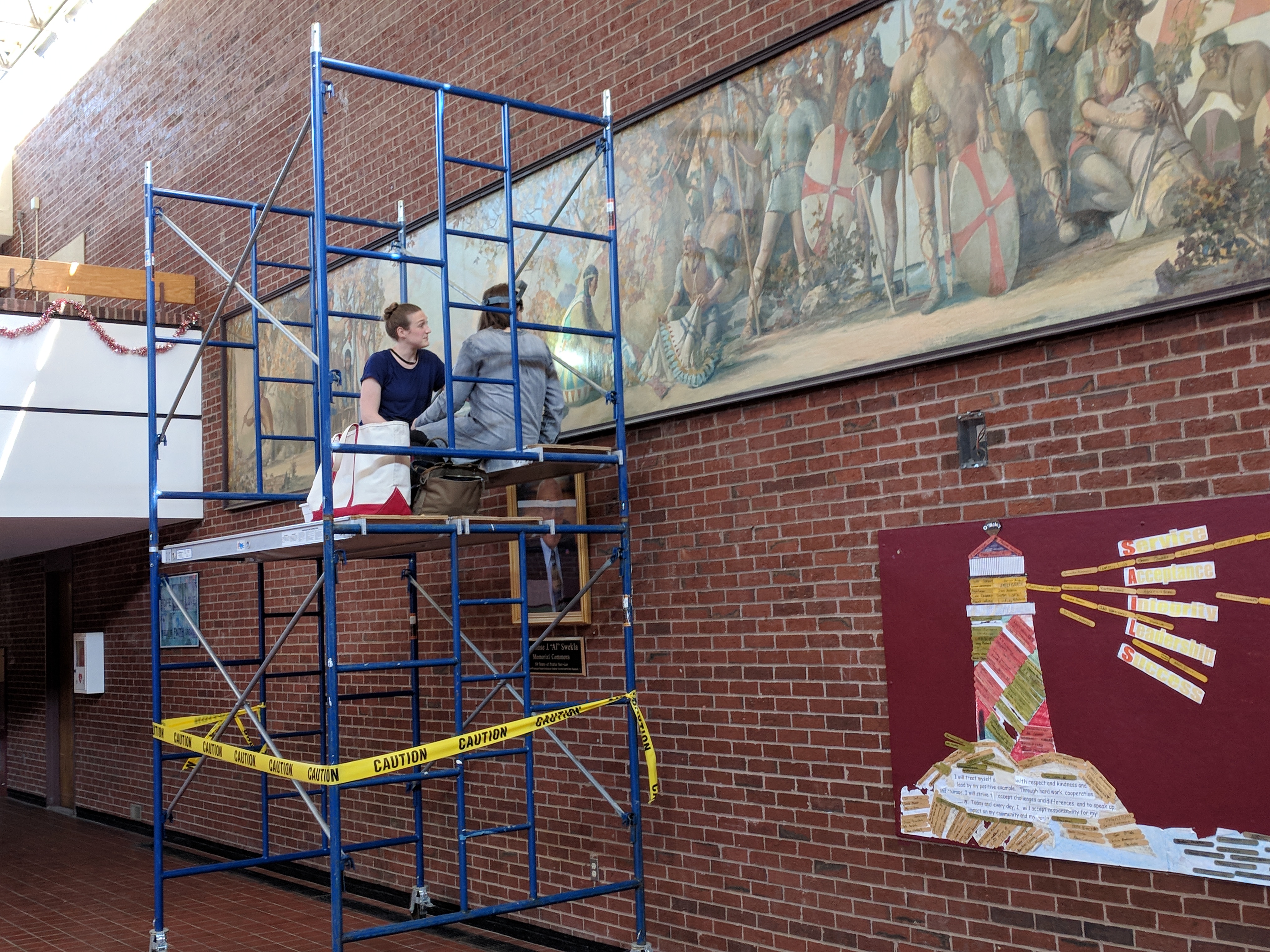
*The quantity of murals is 68 if one includes the five O’Toole murals from the 1940s. Note: because the Gloucester murals are multi-piece or series, the sections tally up to a whopping 75-90 count.
Selection of some murals on view (when open).
Gloucester’s murals at Sawyer Free
Within Sawyer Free Library are the city’s only New Deal works painted directly on plaster walls. Frederick Stoddard’s designs throughout the Saunders house encompass the first floor entryway, two story stairwell, and 2nd story wrap around stairwell hall. He described this two-story “decoration” above wainscotting upstairs and down as “a conventionalized treatment of the Gloucester region”. Familiar scenes include Dogtown “Moors”.
Marine scenes wrap around the former children’s space on the top floor.
A Gloucester Daily Times article from 1934 mentions a trifecta opening honoring the architectural overhaul for the building, new murals, and Rachel Webber’s retirement:
“July 25, 1934- “The public reception at the Sawyer Free Library yesterday afternoon was for three purposes: to observe the 50th anniversary of the occupancy of the present building, to give a public showing to the mural decorations recently completed by Fredercik L. Stoddard and to the entirely restored and renovated building, and to recognize 44 years of service by Miss Rachel S. Webber, librarian who is to retire in the fall…The building has been completely repaired and largely restored. The three story tower which had been built on the front of the building has been removed*, as has the old porch which extended across the front of the house, leaving only an entrance porch. A bay window facing Dale avenue which the architects decided spoiled the character of the building has been sliced off. Everything has been painted and repaired and new lights have been installed.”
*all work near murals!
Howard Curtis assisted Stoddard with some repair work as a result (and was brought back again in 1953, 1974, and 1976-1980). In 1935, Curtis was busy completing his original “The Creation of Light” commission for the Methodist Episcopal Church on Prospect Street (now apartments).
O’Maley
Within O’Maley Innovation Middle School are a complete though out of order Frederick Mulhaupt series (originally at Maplewood); a partial and crucial section from a 2nd immersive series (originally at the High School); and “Our Daily Bread” by Frederick Stoddard, cropped. There are important works by Larry O’Toole commissioned by Ben Pine for the Gloucester Fishermen Institute and YMCA that were painted in the 1940s. Ron Gilson, Gloucester native, author and local historian, helped with the attribution and remembered the completed art being carried out the door. Gilson was great friends with Ben Pine, his first boss, and knew O’Toole.
above: sections from Mulhaupt’s fantastical “Landing of the Viking Thorwald in Vinland” 1935; and central panel “Gloucester harbor” 1936 | below: DPW inspecting the O’Toole 1940s murals (photo 2015)
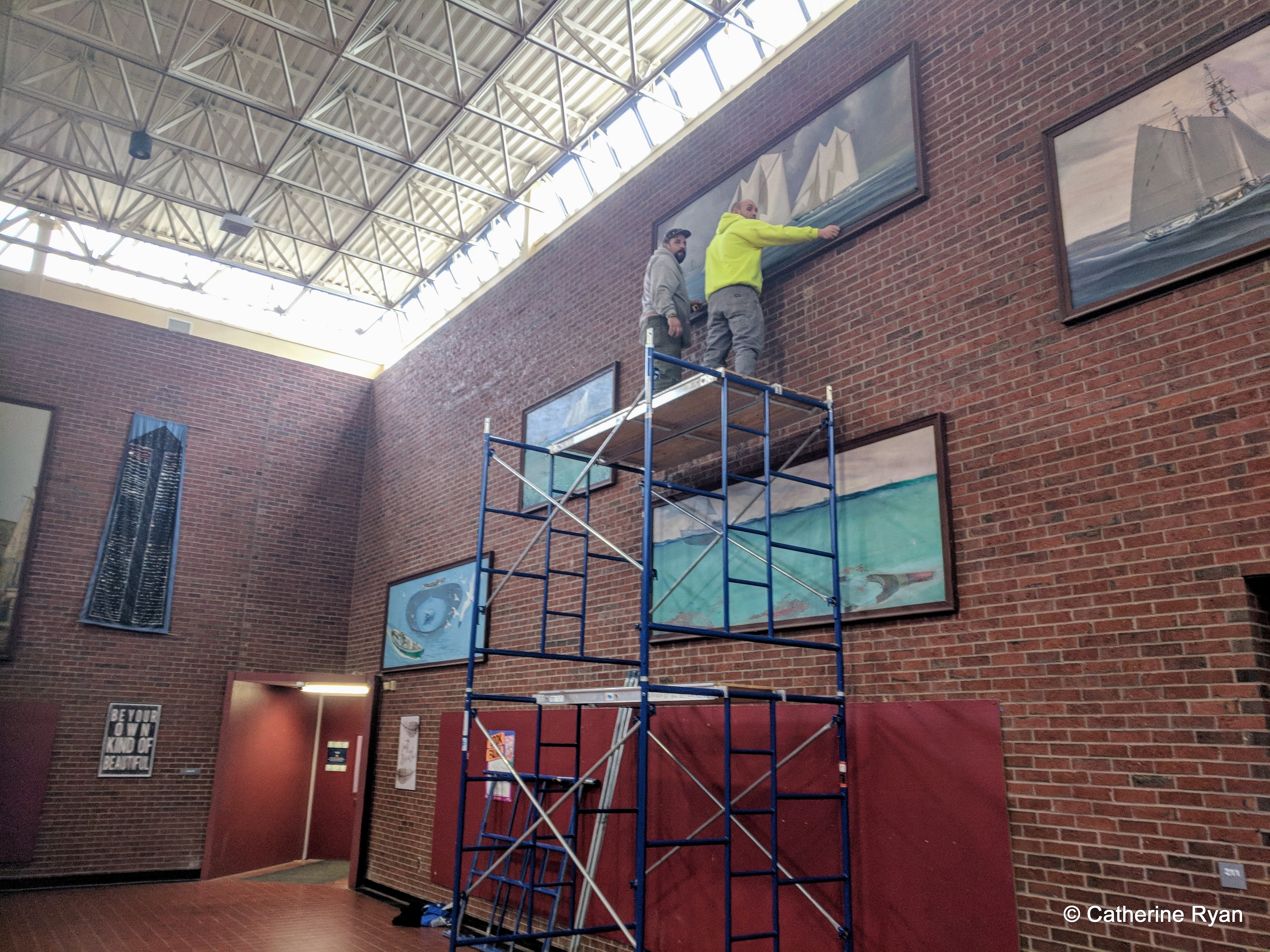
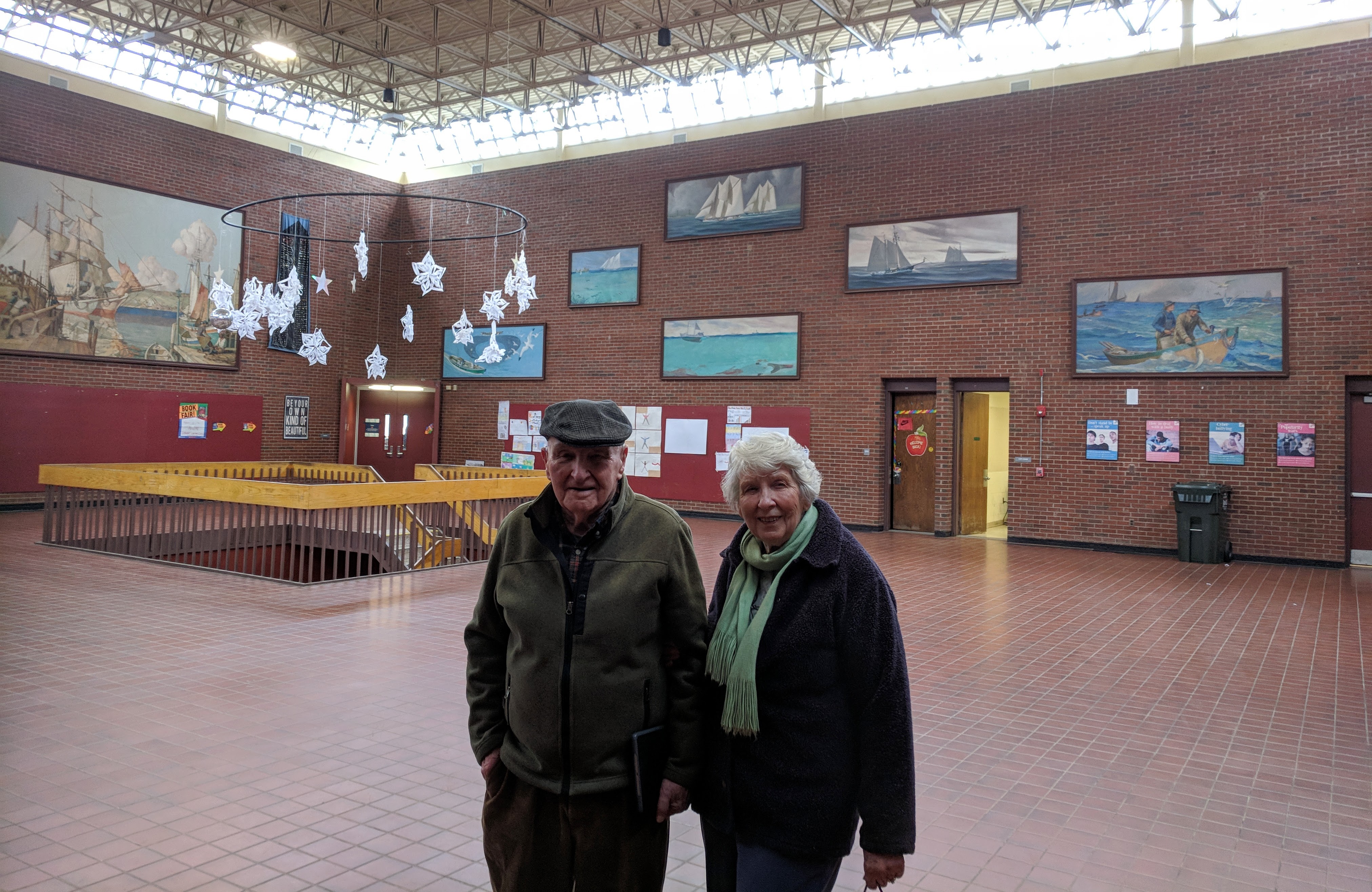
City Hall
Within City Hall, there are 10 monumental New Deal murals by four artists: Charles Allan Winter, Frederick Stoddard, Frederick Mulhaupt, and Oscar Anderson. Three are multi panels so the collection in this building seems much greater than 10 murals. The Winters in the lobby and Kyrouz were site-specific for City Hall.
One is a small Stoddard panel from a triptych spanning 65 feet for Eastern Avenue School!

I’ll follow up with posts detailing more biographical information about the artists.
Does a pair of Gloucester Forbes school murals jog your recall?
The City of Gloucester murals have the potential to be listed among the nation’s most concentrated holdings of New Deal art from the 1930s and 40s on public view anywhere today. However, they are not all on view. Historic murals not on display await further conservation treatment.
Frederick Stoddard set up a studio in an unused room of the Point Primary School in East Gloucester to paint a variety of panels for the Forbes school. African animals by a waterhole, “the only liberty was animals all close to each other and peaceful,” accompany scenes of wild animals & birds and domestic animals. An underwater scene of local fish and vegetation is missing. I imagine every child and adult found it impossible to settle on just one favorite animal.
The largest composition stretched almost 20 feet. Joseph Nunes helped Stoddard with the installation.
This pair from the series were set over the doorways leading to classrooms. Each measures 5′ x 5′, so tall ceilings. Do they look familiar?
Did you attend or are you related to someone who was enrolled at the Forbes elementary school in 1935? Perhaps you visited one of the special viewing days set aside for the public. Fun fact: There have been seven Forbes school locations if we include the two modulars from the 1920s.
Oscar Anderson painted seven soft hued and dreamy murals for Hovey School including three panoramas. Four smaller works from this school are missing since ca.1972 or later. Does seeing a few of them together help you picture the Hovey school interior?
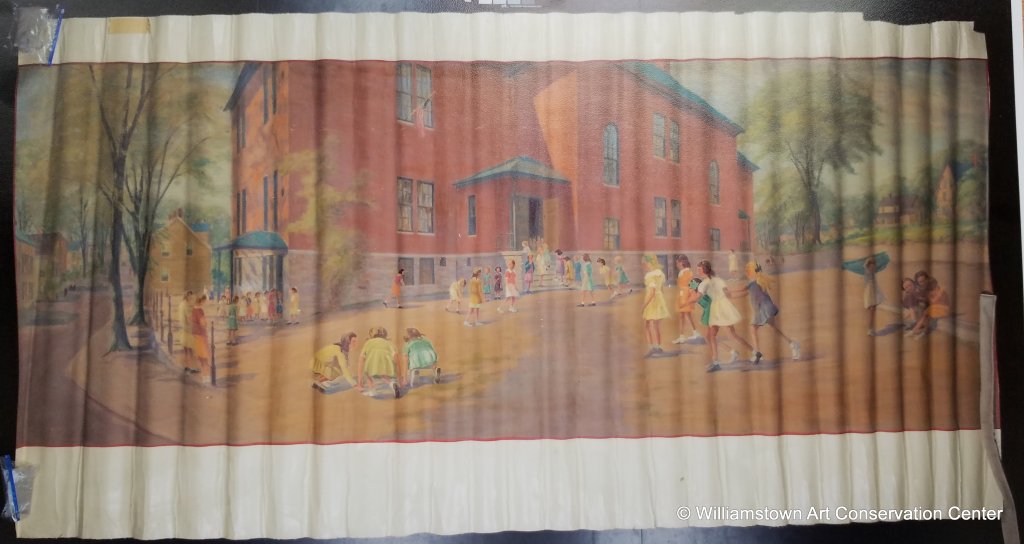
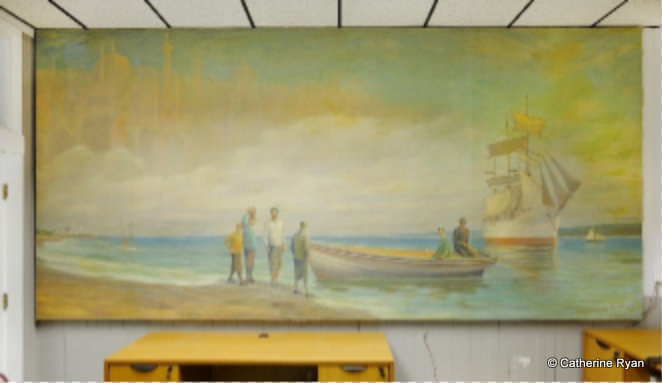
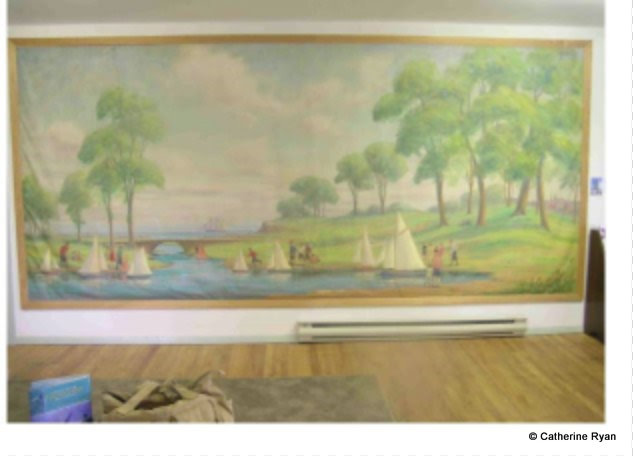
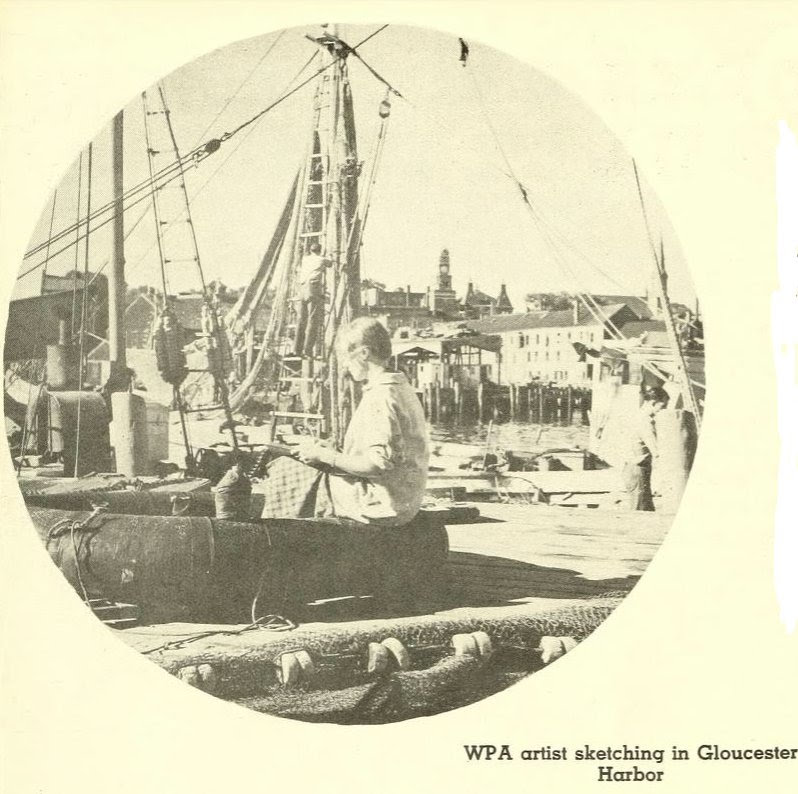
WPA District Briefs – 1930s
Beyond art, Gloucester benefited from multiple New Deal projects big and small. The Jodrey State Fish Pier was a Public Works Administration (PWA) biggie. Emergency funds allocated through the Treasury department paid for new public buildings like Gloucester’s post office.
The WPA helped Gloucester finally cap off the new track and field on Centennial. For years Gloucester residents were asked to dump their trash to build up landfill. The recreation space (now New Balance Field at Newell Stadium) was recognized nationally and dubbed, “Gloucester WPA Centennial Avenue Athletic Field”.
“The benefits of men working has changed unsightly, unhealthy Gloucester dumping ground into a modern fully equipped athletic and recreation field.”
1937 WPA bulletin

WPA Athletic Field 1937 – before GHS (Gloucester vista painted by Edward Hopper, now at the MFA)
Super complimentary letter from Colorado in response to the Gloucester story:
“I have just received your bulletin of October and I cannot refrain from writing to say that I think your inside spread showing the original dumping grounds, the football game, and a panorama of the athletic field at Centennial Avenue Gloucester, is one of the most remarkable photographic histories for public information that I have seen. How fortunate it was that your photographer saw it to get that first picture. It merits very widespread contemplation.”
Very respectfully yours,ERNEST W CORN
Assistant State Administrator Division of Information Service. Denver, Colorado
GHS Football players- recognize anyone?
The field also gained coverage with other WPA football projects
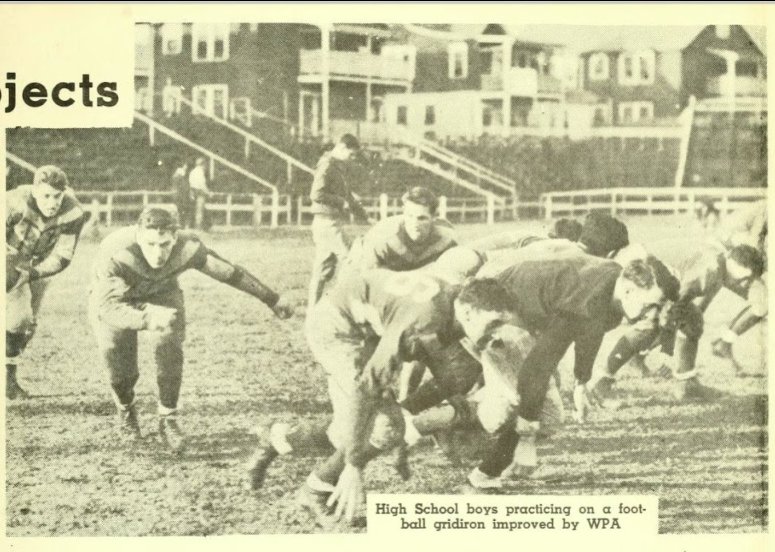

Stage Fort Park
WPA salvage work helped to build a new seawall at Stage Fort Park for flood and erosion control – “More than 3500 tons of stone set in cement were required in the construction of this 1100 foot WPA sea wall at Stage Fort Park, Cressey Beach, Gloucester. The wall preserves the beach area by preventing water and driven sand from flooding the park property.”

“At City Home, Gloucester, WPA razed a dilapidated wooden structure and built an all-stone garage and storage shed. These buildings will be used jointly by the City Home and the Welfare Department.”

Contributions in support of murals needing treatment can be sent to the “City of Gloucester”, note for mural conservation, City Hall, 9 Dale Avenue, Gloucester, MA 01930

